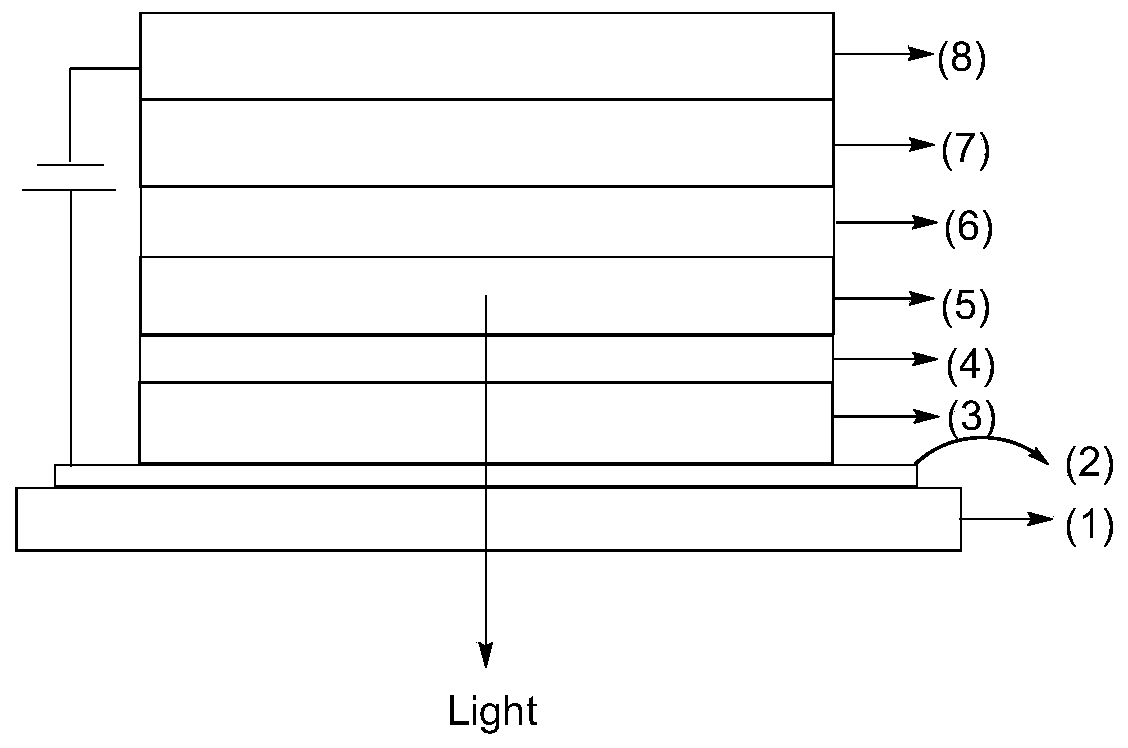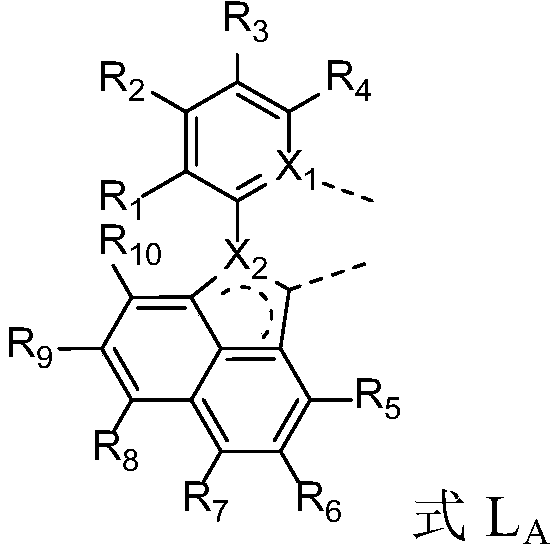Metal complex, material containing the same and organic electroluminescent device
A metal complex, metal technology, applied in the direction of electric solid devices, electrical components, luminescent materials, etc., can solve problems such as unsatisfactory, high luminous wavelength efficiency is difficult to achieve at the same time, and luminous efficiency declines.
- Summary
- Abstract
- Description
- Claims
- Application Information
AI Technical Summary
Problems solved by technology
Method used
Image
Examples
Embodiment 1
[0105] The preparation method of ligand LA10 comprises the following steps:
[0106] The first step: preparation of compound Int-1
[0107]
[0108] Dissolve 10.0g (52.6mmol) of the raw material 5,6-difluoroacenaphthene (CAS: 24737-17-5) in 250ml of carbon tetrachloride, add 20.6g (0.11mol) of NBS and 0.1g of AIBN, heat up and stir Reflux for 8 hours, cool to room temperature, add 500ml of ice water to dilute, wash the organic phase with water, collect the organic phase, dry it with anhydrous sodium sulfate, filter, concentrate under reduced pressure to dryness, and obtain 19.5 g of a yellow solid without purification.
[0109] The second step: the preparation of compound Int-2
[0110]
[0111] Dissolve 19.5g (52.6mmol) of Int-1 prepared in the first step in 200mL of ethanol, add 10.4g (0.16mol) of potassium hydroxide, heat and reflux and stir for 12 hours, cool to room temperature, concentrate to dryness under reduced pressure, add 200mL of ice-water solution was ext...
Embodiment 2
[0119] Referring to the preparation method of Example 1, compounds LA1-LA9, LA11-LA155 were prepared, the only difference being that the 5,6-difluoroacenaphthene in the first step in Example 1 was replaced with acenaphthene with different substituents, the preparation formula Ligands LA1-LA9, LA11-LA155 of corresponding substituents in LA.
Embodiment 3
[0121] The preparation method of ligand LA248 comprises the following steps:
[0122] The first step: preparation of compound Int-4
[0123]
[0124] In a 500mL autoclave, 12.0g (45.6mmol) of 6-isopropyl-1-phenyl-1H-indole-3-carbaldehyde was dissolved in 180mL of dry THF, and 0.8g (38.0mmol) of 4-octyne and 0.8g (57.5mmol) of dichloro(pentamethylcyclopentadienyl) rhodium (III) dimer, 1.8g (5.3mmol) of AgSbF 6 , then added 12.6g (45.6mmol) of silver carbonate, under the protection of nitrogen, the temperature was raised to 120°C, the reaction was stirred for 24 hours, cooled to room temperature, filtered, the filtrate was concentrated under reduced pressure to dryness, separated and purified with a silica gel column to obtain 7.8g of White solid of compound Int.-4 as an intermediate, yield: 55%.
[0125] The second step: the preparation of compound LA248
[0126]
[0127] 10.0g (26.9mmol) of the intermediate Int-4 prepared in the first step was dissolved in 80mL of dry...
PUM
| Property | Measurement | Unit |
|---|---|---|
| external quantum efficiency | aaaaa | aaaaa |
Abstract
Description
Claims
Application Information
 Login to View More
Login to View More - R&D
- Intellectual Property
- Life Sciences
- Materials
- Tech Scout
- Unparalleled Data Quality
- Higher Quality Content
- 60% Fewer Hallucinations
Browse by: Latest US Patents, China's latest patents, Technical Efficacy Thesaurus, Application Domain, Technology Topic, Popular Technical Reports.
© 2025 PatSnap. All rights reserved.Legal|Privacy policy|Modern Slavery Act Transparency Statement|Sitemap|About US| Contact US: help@patsnap.com



